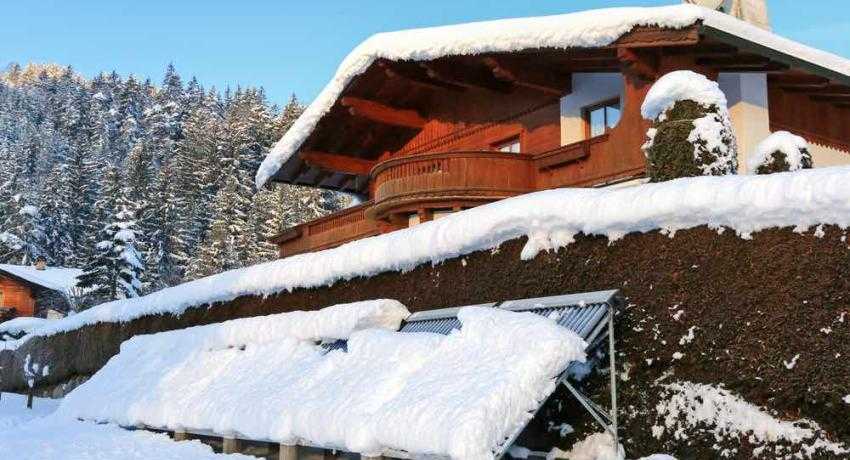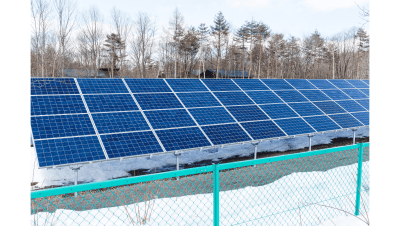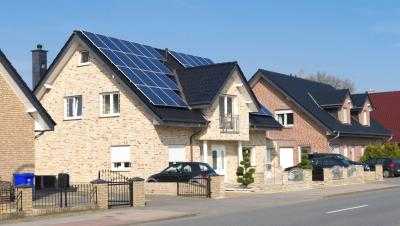Solar Panels & Snow: A Comprehensive Guide
Many people believe that you need to live in a sunny region all-year around, in order to get the most out of your solar installation.
So if you live in the states outside of Florida or Arizona, you have a problem. Not true! Solar panels are productive all through the year – in all four seasons. And even when it snows!
But while most people welcome snowfall, they may be concerned about what happens to their solar panels when they are covered in snow.
Here is a detailed guide on this topic, along with some DIY tips on how to clean the snow from your solar panels.
Are solar panels effective at all during winter?
The answer is an unambiguous ‘Yes’. In fact, you may be surprised to know that solar panels are most productive in bright yet colder temperatures.
As long as your solar panel receives its daily dose of daylight, you can rest assured that it is indeed being busy, producing clean, green, solar energy.
But of course, if you live in a region with short, winter days, the solar panel will naturally receive less daylight during this time. This will cause it to produce a lower amount of energy than during long, summer days.
This is generally not a concern as the total solar energy produced is leveled through the year, offsetting costs of installation.
Furthermore, most establishments continue to stay connected to the grid, even with a solar panel. This allows them to give back excess solar energy to the grid during bright weather conditions (and get paid for it), and consume energy from the grid during poor daylight conditions.
Are solar panels effective when it snows?
Well, here is another pleasant surprise, as snow has the ability to reflect light. This means that your solar panel will continue to be effective during the day, even when hit by an unexpected deluge of snow.
Now here’s the caveat. If your solar panels are covered neck deep in snow – meaning that snow has collected over a number of days, the panels will receive less light than when completely uncovered.
This automatically reduces the amount of solar energy they produce. They are still productive, but a little less effective.
How do solar panels produce energy in colder temperatures?
The energy produced by a solar panel is caused by two elements:
- The photons present in light particles
- The electrons present in the photovoltaic cells in the solar panel
When these two ‘hit’ each other, the resulting friction produces solar energy.
During summer, the panels receive a fair amount of daylight, which in turn leads to the production of solar energy. On the other hand, a clear winter day will cause enormous friction, between the light particles and the photovoltaic cells, due to the difference in their temperatures. This is significant enough to produce more energy than during a clear summer day.
Finally, when there is lack of daylight – in summer or in winter – there is no friction, and hence no solar energy being produced.
Should I clear snow off my solar panels?
Yes, you can clear snow off your panels. BUT, you may not always need to do so.
Solar panels are often installed at a slight incline, allowing snow to organically tip and fall off the panel.
Even if they are installed on a flat roof, as long as the climate allows the snow to quickly melt into water, you can still wait out that sudden snowstorm, as your panels will eventually have access to clear daylight.
Now consider a season where it continues to snow for days, or allows the possibility for the snow to solidify into ice. In the best case, your solar panel receives less daylight, and hence produces a lower amount of solar energy.
In the worst case, the sharp edges of cracked ice may even cause damage to your solar panels. (These damages are typically not covered by warranty!) In this situation, you are better off using one of the methods listed below, to clear snow off the panels.
Five Straightforward Tips to Remove Snow of Solar Panels
1. Rest it out
This means that you do nothing and allow nature to take care of it. This works 80% of the time, especially when a snow day is typically followed by a clear day.
But if your panel is housed on a completely flat roof even as the temperature gets colder and dryer every day, be prepared to get proactive about the snow steadily collecting on your solar panels.
2. Hire a professional
Yes, this comes at cost. But it also comes with plenty of other benefits.
- Your inexperienced self is not put at risk. This is especially worthy if your roof is not easily accessible, or at a height where a fall could prove fatal. As that old adage goes, safety first, always.
- Your solar panel is appropriately protected. This may not happen if an amateur casually uses a sharp rake to clear the panel, and inadvertently causes irreparable damage to it.
3. Sweep it out
Before you get excited and rush towards your roof, you should know that garden rakes and uneven brooms are not an option. Instead, use a “roof rake” – one that comes with a softer end (like a sponge), so it effectively cleans your roof without damaging the solar panels.
4. Water it out
This is a lot like hosing out the dirt out of your driveway. So pick up a strong garden hose, and head towards your roof.
Here, you would need to keep an eye on the water pressure, so it does not inadvertently damage your roof shingles or the solar panel. (This automatically rules out the use of power-wash or pressure-wash systems. You can however use a soft-wash system that is suitable for roofs and solar panels).
You could also clean it using bucket of chemical-free soap water and a sponge, much like you would with your prized car. This is perhaps the gentlest yet most thorough way to get snow safely off your solar panels. But be careful about walking on your roof while doing this and you have to consider the wear and tear on your roof as well.
5. (Hot) Air it out
If you want to get especially handy, you could consider connecting an air hose/ pipe to a leaf blower, and carefully run it on top of your roof. Again, you will need to ensure that you do not exert too much pressure that scratches or damages any part of your roof.
Finally, solar panels are impressive, not just with the energy they generate, but also with their upkeep and maintenance.
As long as you use a sensible and gentle method that avoids harsh chemical substances (like RainX, car wax, etc.), your solar panel will continue to have a long, bright, productive future. Perfect!




